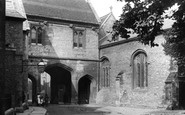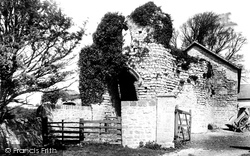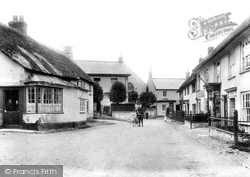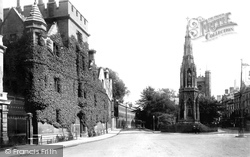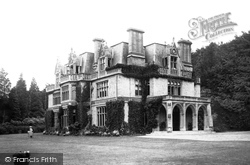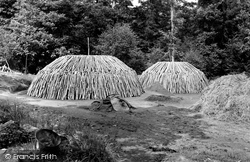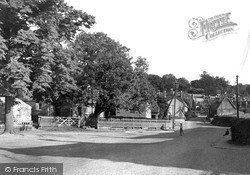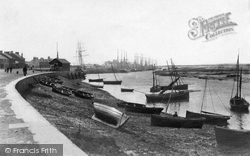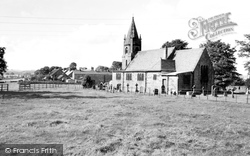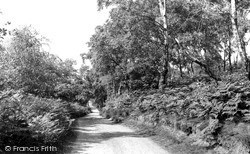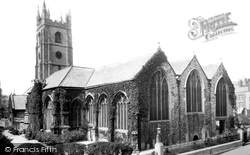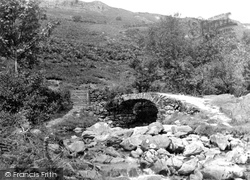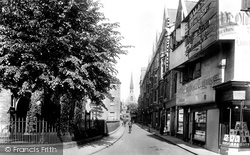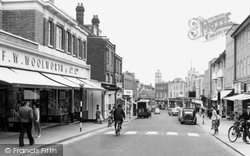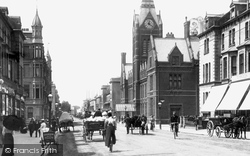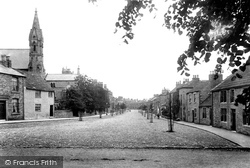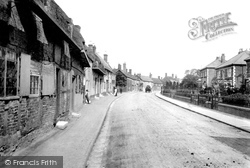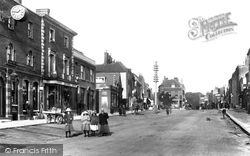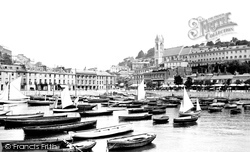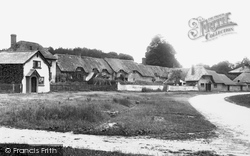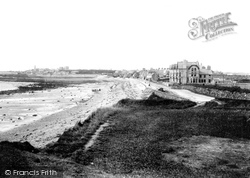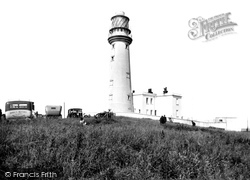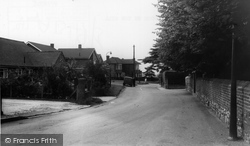Places
Sorry, no places were found that related to your search.
Photos
Sorry, no photos were found that related to your search.
Maps
39 maps found.
Books
Sorry, no books were found that related to your search.
Memories
779 memories found. Showing results 21 to 30.
A Little Canadian Girl In Putney In The 50's .
My Dad was in the Canadian army and was posted to London when I was 7 years old . We lived in the top flat at 27 Chartfield Avenue . What a magical place ! The back yard was huge, with apple, ...Read more
A memory of Abingdon-on-Thames by
A Lovely Girl And A Bonny Place
It's a bit unfair to say my memory is from 2000, as it actually goes back to when I was born (1980) and only ends last year (2008). My earliest memories are of being at my Aunty Stella's. She wasn't really an ...Read more
A memory of Denton Burn in 2000 by
A Million Miles From A Game Of Football.
I wrote this piece for a writing group exercise in April/May 2019, near my home in NE Scotland. LIttle did I know then that some of the memories would form part of my Mum's Eulogy just three months later. The ...Read more
A memory of Wembley by
A Sort Of Evacuee
My family have been on Bute for many hundreds of years but I was born in South Wales...Dad was a master Mariner and died in 1935. I have written a description of boyhood on Bute through the War and this is in the Bute Sons and ...Read more
A memory of Rothesay in 1930 by
A Walk From The Plains On A Sunday
A few of us used to do the this walk on most Sundays. We used to meet at Bins Coalyard. Coming in to Plains from Clarkstone, we walked in to Plains, turn right past the signal box across the railway, over ...Read more
A memory of Plains in 1957 by
A Fantastic Childhood
I was born in Seaton next to the Geoge and Dragon in 1949. I still live in the village, in a house we moved into in 1952. Seaton gave me a great childhood. In the 50's it was very much an agricultural village ...Read more
A memory of Seaton in 1956 by
A Few Lasting Memories Of Bredbury
I was born in Romiley in 1949,went to barrack hill when we moved to bredbury in1957. I went on to highfield .we lived on Brookfield avenue,used to call at sercome's on berecroft lane on the way to school.The ...Read more
A memory of Bredbury in 1860 by
A Great Start To Life Growing Up In North Bitchburn
Here are just a few of my childhood memories of my youth in North Bitchburn. My name is Ian Pinkney, I lived at No 10 Constantine Road, along with my father Raymond, he was in charge of ...Read more
A memory of North Bitchburn
A Little Girl's Memory Of The Pauldens Fire
Hiya. I watched Palden's burn down, stood next to my grannie Nellie. We were standing at the corner of Humamby Avenue, near City Road, Hulme, where my family lived. From about a mile away you ...Read more
A memory of Hulme by
Captions
291 captions found. Showing results 49 to 72.
By the time that this photograph was taken, very little of Barry Castle remained.
The men standing at the door on the left are customers of the Lion Inn, which burned down on 8 November 1908 and was never rebuilt. The Congregational Chapel in the background was built in 1831.
To the right of Balliol College is the famous Martyrs' Memorial, commemorating the 16th-century Protestant martyrs Latimer, Ridley and Cranmer, who were burned at the stake in nearby Broad Street.
Tennyson knew and loved Haslemere and the Surrey hills. Aldworth, his former home, is in Lurgashall, Sussex, but close to Haslemere, along the now renamed Tennyson Lane.
Epping Forest, which now covers some 6,000 acres, was ten times larger in the 17th century.
This is not Isaac Newton's Woolsthorpe, but the village west of Grantham in rolling countryside right on the Leicestershire border; it has fine views of Belvoir Castle a mile away on its hill on the other
A royal burgh and port, Irvine was, by the 1920s, a town of 7,000 inhabitants.
The small village of Burnt Yates in Nidderdale is graced by this neat little Victorian sandstone church.
In 1698 the traveller Celia Fiennes noted that there was a considerable industry of cutting and burning the bracken on Cannock Chase.
St Andrew's is the mother church of Plymouth; there is evidence that a Christian community used the site as early as the 8th century. Construction of the present building commenced in 1370.
High Sweden Bridge is a picturesque packhorse bridge over the Scandale Beck between High Pike and Snarker Pike (there is a Low Sweden Bridge lower down the valley).
High Sweden Bridge is a picturesque packhorse bridge over the Scandale Beck between High Pike and Snarker Pike (there is a Low Sweden Bridge lower down the valley).
Exeter College was founded by one of Exeter's bishops in 1314, though most of the college buildings have been restored or rebuilt over the years.
Another well-known multi-national dominates this view; the branch has been here since about 1930, though the left-hand extension is a post-War development on the site of the Cinema de Luxe, which burned
This bustling view of Church Road with its bicycles and horse-drawn vehicles is dominated by the sadly- lamented old Town Hall, which burned down in 1966.
Perhaps Richmond's most handsome and unchanged cobbled street, Newbiggin means 'new settlement'; its level width suggests that it was planned as the town's original market place.
The notorious Judge Jeffries condemned her to be burned at the stake, but this sentence was commuted to beheading. She is buried in the nearby churchyard at Ellingham.
The Constitutional Club (far left) burned down in February 1910. The blaze also damaged Archer's ironmongers' shop next door (with a kettle for its trade-sign).
Tennyson knew and loved Haslemere and the Surrey Hills. Aldworth, his former home, is in Lurgashall, Sussex, but close to Haslemere, along the now renamed Tennyson Lane.
Its west window was designed by the pre-Raphaelite artist Edward Burne-Jones.
During the 1830s this pretty village was the scene of a major uprising among farm labourers, with angry mobs burning hayricks and destroying machinery.
If coal was burned in these houses, it had to be imported from the mainland.
The lighthouse was designed by Samuel Watts and built by John Matson at a cost of £8000. It was first lit on 1 December 1806.
Firstly, the Shaa family, who owned land here, produced two Mayors of London. Secondly, a local farmer called Thomas Higbed was burned at the stake in 1555, on a charge of heresy.
Places (0)
Photos (0)
Memories (779)
Books (0)
Maps (39)

